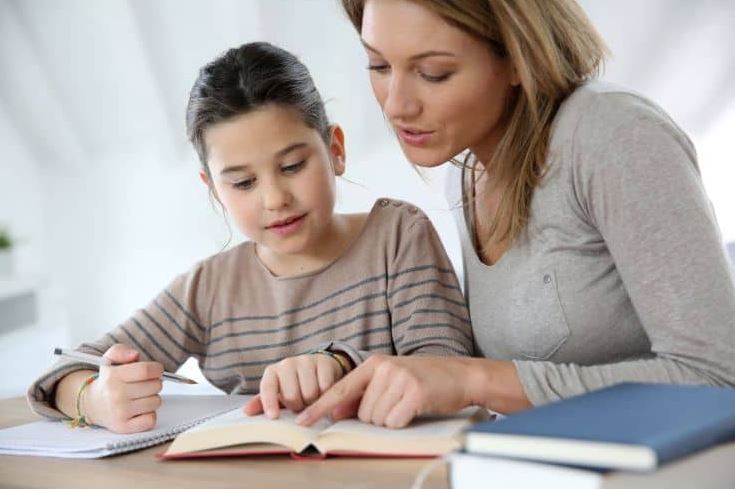Private instructors are essential for assisting the students in their academic endeavours. They can offer customised support and focused instruction to aid students in achieving their academic objectives. The capacity to accommodate various learning styles is a crucial component of being a successful private instructor. This post will examine how private tutors can modify their instruction to suit different student learning styles and improve learning outcomes.
Acknowledging Learning Styles:
The three main learning preferences are kinesthetic, auditory, and visual. For example, visual tools like charts and diagrams help visual learners to understand things more clearly. On the other hand, kinesthetic learners learn better through practical applications and tactile experiences.
Identifying the Learning Styles of Students:
Tutors must determine their pupils’ learning preferences to tailor their teaching strategies. This learning preferences can be accomplished using various methods, including observation, surveys, and conversations with parents and students. Tutors can adapt their lecture style based on the student’s needs.
How to Adjust for Visual Learners:
Tutors can use visual materials and assistance to adapt their lessons for visual learners. This includes using diagrams, charts, and movies to improve understanding. As a result, visual learners can be engaged, and the learning process can be made more fun by creating a visually stimulating learning environment.
Supporting Auditory Learners:
Activities like speaking and listening are beneficial for auditory learners. To meet their auditory needs, tutors can use lectures, debates, and audio recordings. In addition, interactive exercises that improve speaking and listening abilities can help them learn more effectively.
Kinesthetic learners’ engagement:
When they can actively participate in the learning process, kinesthetic learners flourish. To engage kinesthetic learners, tutors can include practical exercises, role plays, and experiments. In addition, moving them about and letting them engage with the subject can greatly improve their understanding and recall.
Flexible Teaching Techniques:
Private tutors must have an adaptable approach in their instruction. Combining multiple strategies and approaches is necessary to adapt to various learning styles. Tutors can design a balanced learning environment to meet various needs of their pupils by using components from visual, aural, and kinesthetic learning approaches.
Collaboration and Communication:
Tutors must develop open communication and efficient teamwork with their students for efficient learning outcomes. Developing a rapport with students enables tutors to comprehend each student’s specific requirements and preferences. Working with parents and other educators can offer insightful advice and help modify instruction.
Making Use of Technology:
To augment their instruction, tutors can use multimedia platforms, instructional apps, and interactive internet resources. This means multi aspect learning styles can be adapted with the help of technology. These resources help to expand children’s learning options visually, audibly, and physically while also increasing their engagement and comprehension.
Plans for Personalised Learning:
A crucial tactic for accommodating various learning styles is creation of individualised learning plans. To create customised plans, tutors can evaluate students’ strengths, limitations, and the learning preferences. Continuous improvement and ideal results are ensured by monitoring students’ progress and adaptable teaching strategies accordingly.
Giving Students Power:
Students are better equipped to take control of their education when they are encouraged to recognise their unique learning preferences and styles. Tutors can help students to identify their preferred learning styles and develop self-control and study techniques. Students can also adapt different learning contexts and become independent learners as a result of this.
Overcoming obstacles:
For example, changing alternative learning styles may be difficult if students or parents resist the shift. Tutors need to clearly explain how customised education can be beneficial for students. Overcoming initial resistance and promoting a positive learning environment can be accomplished by providing assistance, direction, and assurance.
The function of career development:
Private tutors should invest in professional self development. Tutors can learn newest research, approaches and learning tools by participating in workshops, training sessions, and networking events for adjusting their learning styles.
Case studies and success stories:
Numerous success examples demonstrate the beneficial effects of specialised teaching techniques. Tutors have assisted students in overcoming learning difficulties, enhancing their academic performance, and cultivating a love of learning by adjusting to various learning styles. These triumphs provide motivation and emphasise the need to meet individual needs.
FAQs
How long does it take to identify a student’s learning style?
It takes time to identify any student’s learning style. It generally requires a combination of observation, assessments, and feedback. Acquiring enough data and spotting recurring patterns can take a few weeks or longer. Accurately identifying a student’s learning style requires time and many assessments.
Can a learner have different learning preferences?
Yes, a learner can have different learning preferences. Each student is unique, and their preferred learning styles can vary depending on the situation, subject preferences & understanding level. Some learners may learn fast through visual learning on certain topics, while others prefer the traditional learning process.
What if a tutor is not familiar with a specific learning style?
Tutors can develop professional skills if they are unfamiliar with a certain learning style. To understand more about the learning style, tutors can research on the internet, other resources like going to workshops, or work with other educators. Adjustment and continuing learning are necessary for offering kids complete support.
How can tutors adapt different learning styles in group settings?
Tutors can adapt different learning styles in group settings by applying various learning strategies. They can introduce visual aids like diagrams, animation or charts, for visual learners; encourage discussions and group activities for better auditory learning.
Are there any recommended resources for further learning?
Yes, there are several recommended resources available for tutors to enhance their learning improvement. Various tutoring services providing websites offer valuable articles, videos, and teaching strategies. Books like “The Skillful Teacher” by Jon Saphier and “Teach Like a Champion” by Doug Lemov provide practical techniques.
Conclusion:
For private tutors, the ability to accommodate various learning styles is essential. Tutors can design a more productive and interesting learning environment by identifying and catering to each student’s specific interests. Learning methods can be modified to increase academic achievement and overall student success.




